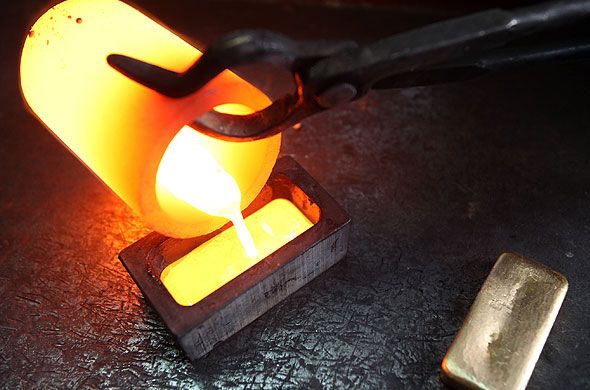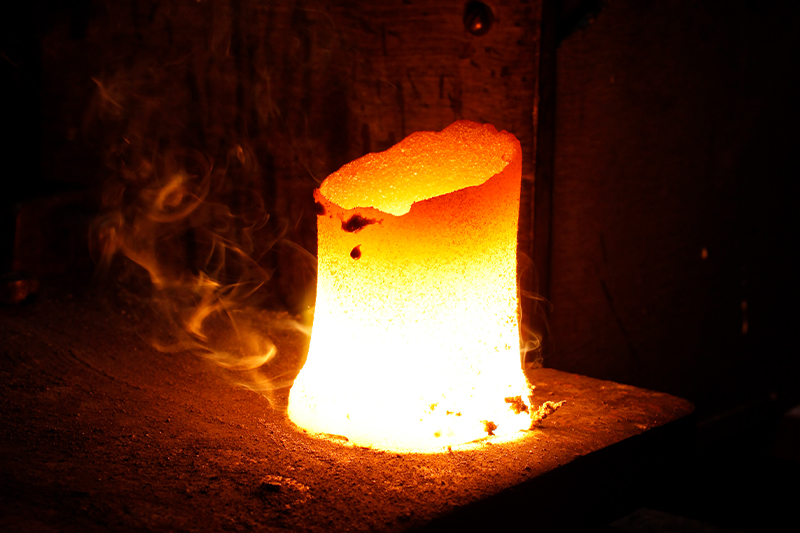Prime Scientific - Assaying Gold. How Pure Gold Is Forged From Fire.
Fire assaying has been practiced since ancient times and has proven to be very reliable in the determination of precious metals. References to fire assaying are found in the old testament of the Bible

What is Fire Assay?
Fire assay is a method to determine the composition and content of precious metals in minerals and metals through high-temperature melting and chemical reactions. The method quantitatively determines the content of precious metals by adding flux to smelt ores and metallurgical products. This method has the advantages of good sampling representativeness, wide applicability, and good enrichment effect. It is an important means for the chemical analysis of gold, silver, and precious metals.
Fire assay procedures use a combination of intense heat (1900 °F) that is produced by a furnace, dry reagents called fluxes, and bone ash containers called crucibles and cupels. One uses this combination to fuse the fluxing agents and to isolate the precious metals.
How to do a gold fire assay?
1. Weigh 0.50g or 1.00g sample, accurate to 0.00001g.
Weigh 4 pieces of pure gold standard samples similar to the gold content in the sample, accurate to 0.00001g. Add 1.25g or 2.5g pure silver to each sample and the pure gold standard, and wrap it into a spherical shape with two pieces of lead foil.
2. Number of measurements.
Three measurements were performed independently, and the average value was taken.
3. Cupellation.
The cupellation is preheated at about 950°C for 20 minutes, and the packaged samples or standard samples are placed in the arranged cupel in order. After the molten lead is removed, the furnace door is slightly opened for ventilation, and the cupellation is performed at 920°C±20°C. After the bright spot appears, close the furnace door and cut off the power supply. When the furnace temperature drops below 750°C, take out the cupel to cool.
4. Annealing and milling.
4.1 Use tweezers to take out the gold and silver alloy particles from the cupel. Hit both sides of the particles with a hammer, brush off the attachments,650°C-700°C annealing for 5min. Take it out, cool and grind it into a 0.2mm sheet, and anneal it at 650°C -700°C for 3 minutes.
4.2 Roll the annealed gold and silver sheets into a cylindrical shape and place them in the gold parting basket.
5. Parting.
5.1 The first time of gold parting: Put the gold parting basket into 90°C -95°C nitric acid, heating for 30 minutes, take out the gold parting basket, and wash 3 times with hot water.
5.2 Second gold parting: Put the washed gold parting basket into nitric acid preheated to 110°C degrees Celsius, heating for 40 minutes, take out the parting gold basket, and wash it with hot water 3 times.
5.3 When the sample amount is 1.00g, carry out the third time of gold parting: the operation is the same as the second time of gold parting, the gold is parted for 30 minutes, and washed with hot water 5 times-7 times.
5.4 Burning: After the gold roll is dried, burn it at 650°C -700°C for 3 minutes, cool to room temperature, and weigh.
6. Calculating the analysis results.

Advantages of Fire Assaying
(1)Good sampling representativeness. Gold and silver are often present unevenly in the sample at the order of <g/t. The fire assay has a large sample size, generally 20-40g, and even samples up to 100g or more can be taken. Therefore, the representative of the sample is good. The sampling error is reduced to a minimum.
(2) Wide adaptability. It can adapt to almost all samples, from ore, gold concentrate to alloy gold, the fire assay method can accurately determine gold and silver, including those antimonites that cannot be solved by wet analysis. For the analysis of the main components of pure gold, the fire assay can also obtain satisfactory results. Except for very few samples, this method can be adapted to almost all minerals.
(3) The enrichment efficiency is high, reaching more than ten thousand times. A small amount of gold and silver can be quantitatively enriched from tens of grams of samples containing a large amount of matrix elements into the test gold button.
(4) The analysis results are reliable and accurate. Over the years, some scholars at home and abroad have tried to completely replace the fire assay with new wet chemical analysis or instrumental analysis, but they have not succeeded so far.
Conclusions
Fire assays are the standard for valuing gold and silver at major mining companies and refineries. In the process, metal is melted down, then the precious metal sample is chemically separated from the other metals. The process is different for each precious metal, using a variety of chemicals during the separation process.
References
1. https://www.911metallurgist.com/blog/fire-assay
2. https://www.decent-group.com/article/fire-assay-definition-and-solution.html#:~:text=Fire%20assay%20rucible%20is%20an,cold%20and%20extreme%20heat%20resistance
3. https://www.mgsrefining.com/gold-refining-process/testing-methods/fire-assay/
4. Features of The Fire Assay Method https://www.linkedin.com/pulse/features-fire-assay-method-miss-jane?utm_source=share&utm_medium=member_android&utm_campaign=share_via
Prime Scientific
Prime Scientific provides equipment, instruments and other related products and materials. We aim to be a one stop shop for all our customers laboratory needs. Since 2001, Prime has strived to provide the best services and solutions to the scientific community in the region.
No comments yet. Login to start a new discussion Start a new discussion